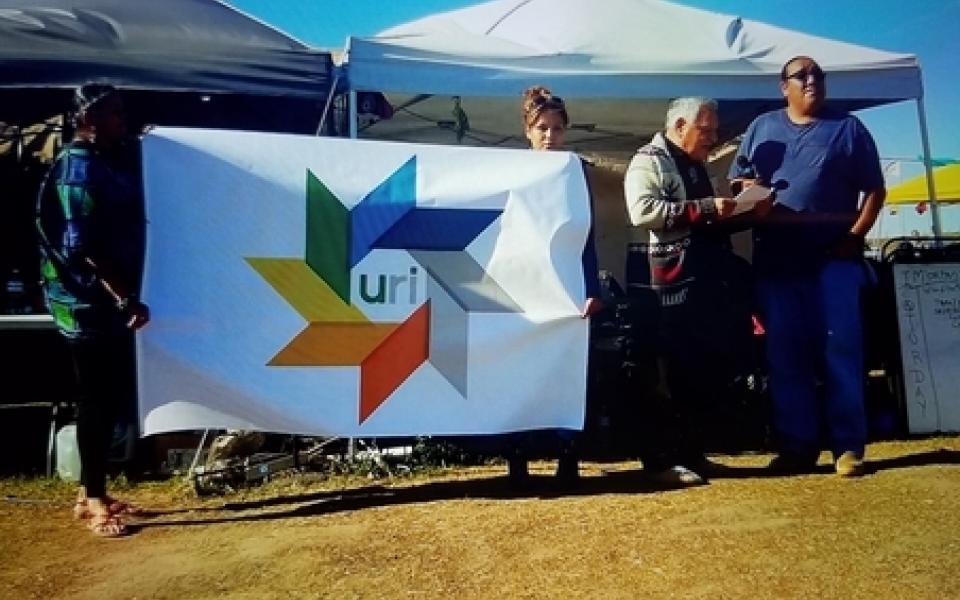
Recently during a moment of meditation I returned to a place where I grew up: the meek woods of New England. I’m clothed in a dark night sky polluted only by the glow of the stars, where the cool air invites a deep openness of breath and cradles me in silent aloneness. When I allow myself to return to the woods of Massachusetts in my memory, or when I take an afternoon to visit the Pacific shores near my new home on the west coast, I am reminded of how my sense of wellbeing, confidence and stillness mirrors my experience of the natural world.
Just as my sense of peace relies on both my physical and spiritual wellbeing, so too do I rely on the natural world for physical and spiritual health. In this sense my relationship to the natural world—the land, waters, skies, winds and light— is just as much physical as it is non-physical. In an era of climate change and accelerating environmental degradation we are asked to confront how the changing Earth impacts and will continue to impact our access to necessary resources like water and nutritious sustenance, as well as our emotional and spiritual wellbeing under various ecological stresses like air pollution and saltwater intrusion.
The Earth is our provider. In turn she only asks for our attention, our care, our being-as-witness to her and all that she does. We are to watch the land as we plant, to observe how new life comes into being and to how her many rhythms influence our lives.
As witnesses we are also responsible to attend to the signs and symptoms of illness and weakening. We must direct our eyes to the eroding Bayou of New Orleans, to the sea-life washing ashore the Pacific coast, to the floods around the world that disrupt agricultural calendars and age-old practices, and even to how industry prods, pillages, and blackens the Earth in the name of a certain type of economic growth.
These past few weeks mark for me a special moment of responsibility: The call to stewardship comes from the Standing Rock Sioux Tribe of North Dakota to halt the construction of the four-state Dakota Access Pipeline (DAPL).
The DAPL is a proposed 1,172-mile oil pipeline that has potentially devastating consequences for the All Earth— frequent oil spills, water contamination, biodiversity loss, to name a few; infringes upon the sacred lands, waters, resources and legal standing of the Standing Rock Sioux; and signifies a disregard for the growing consensus to move towards a zero-emissions, non-exploitative, renewables-based energy economy.
The call is loud and clear. Over the past few weeks I’ve received email blasts asking for supplies for the Standing Rock Sioux and for those standing in solidarity with them and for rides to North Dakota to join the growing number of Earth allies. I’ve seen a growing number of people raining their virtual-voices on Twitter, expressing their dissent and care for the Earth and solidarity with those who are on the front lines of justice for the Earth, for life, for sacred land and tradition.
However, on Friday September 9th, we were met with a devastating statement by a federal judge denying the Standing Rock Sioux’s request for an injunction to stop the Dakota Access Pipeline. The tone suddenly changed: environmentalists and allies sighed a sigh of disappointment. The decision was a clear instance of the privilege of profit of the fossil fuel industry over the voice of a people calling for the protection of drinking water and sacred lands.
But within an hour of the federal ruling the US Department of Justice, the Department of the Army and the Department of the Interior issued a statement effectively halting construction on an especially sensitive area along the pipeline’s construction bordering Lake Oahe, a large reservoir on the Missouri River. This is a clear sign that our calls were heard, and that—as the statement reads—“thousands of demonstrators [came] together peacefully, with the support from scores of sovereign tribal governments, to exercise their First Amendment rights and to voice heartfelt concerns about the environment and historic, sacred sights.”
By raising our voices as One, we showed that we are committed to upholding our responsibilities as stewards of the Earth and as caretakers of our fellow human. In addition to calling for the protection of sacred waters, the diversity of voices calling for the federal government to respect the sacredness of indigenous wisdom led the Department of Justice to declare a “need for serious discussion on whether there should be nationwide reform with respect to considering tribes’ views on these types of infrastructure projects.”
This is a moment of tangible hope. It is a moment of hope for the Standing Rock Sioux, for their ancestors, and for the caretakers of Earth’s wisdom; it is a moment of hope for all those touched by the waters of the Missouri River, for environmentalists across the country, and for all of us who dream of a healthy and abundant Earth for ourselves and our grandchildren.
When we find ourselves wondering if the fight for resources is an invitation for divsiveness and terrirorialization, we ought to keep in mind that scarcity and vulnerability is an opportunity for new solidarities and innovation.
